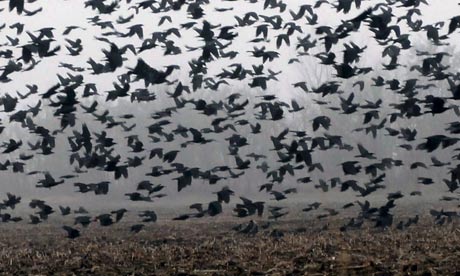
We already know the impact a great novel can have on a town – but can a poet do the same? Having recently moved to West Yorkshire, an area synonymous with two of the 20th century's greatest poets – Ted Hughes, who was born here, and Sylvia Plath, who is buried here – the answer has to be a resounding yes.
With its tree-lined flanks, wild moors and tumultuous, ever-changing weather, the Calder Valley is a beautiful place; it's easy to see why both poets felt compelled to put the area on the map. And though they lived here only sporadically, Calderdale has continued to keep their presence alive. For tourism reasons, certainly, but also because these things matter. Their poetic legacy is so inescapable today that every time I try to jot down an observation, it's as if Ted Hughes is looking over my shoulder and tutting: "Been there, done that – and far, far better …"
A walk through the valley is a walk through the recent written past. Starting out at Mytholmroyd, where Hughes was born in an end-of-terrace house on Aspinall Street, it's only a short stroll to the Ted Hughes Theatre at Calder High School, where an original Hughes poem hangs on the wall. Such reverence to both poetry and the local lad who wrote it is heartening. Hughes is further remembered not through a token plaque, but in the annual arts festival Mytholmroyd holds in his name.
Passing through Hebden Bridge one mile down the road I'm screamed at by a murder of crows, an image that recurs throughout Hughes's work. Then it's along the canal to the homely pub that was Hughes and Plath's local, and which Hughes immortalised in one of the biggest-selling poetry collections of all time, Birthday Letters.
I then take the steep, mile-long path up to unchanged Heptonstall – Hughes's "black village of gravestones" – perched on the exposed hill above Hebden Bridge where "the moorland broke loose". Five years after Plath's death, Hughes bought an old mill manager's house here which is now home to the Arvon Foundation's residential writing courses. Here, where the rolling clouds seem just inches above your head, the sense of the two poets is strongest. Maybe it's my London lungs, but even the air seems thinner, headier.
And then it's on to St Thomas a Becket's cemetery where, according to Plath's "November Graveyard", "skinflint trees / Hoard last year's leaves" and "dour grass / Guards the hard-hearted emerald of its grassiness". Actually it's a nice day and I'm sweating profusely, but it's not hard to imagine what it must have been like here in November, looking down on a valley still soot-black from the recently closed mills, thousands of miles from her American home.
One can only hope Plath had no inkling she'd end up here herself so soon – and wonder what she would have made of the many fans who keep scratching the "Hughes" part off her headstone. Or, indeed, the fact she gets two pages on Heptonstall's website, with the honest disclaimer that "unfortunately, the webmaster is barely literate, so further development would require contributions". There's just time to pass the grave of Hughes's Uncle Richard (immortalized in his poem "Dick Straightup"), a man who "fell in the sleet, late" only to be "chipped out at a dawn / Warm as a pie and snoring."
On the long walk home I consider the huge impact that Hughes and Plath – and poetry itself – have had on this dale. As the sky turns grey again, it's good to know that while poetry may be a marginalised form, it is still capable of producing those revered few whose work will resonate for centuries through the landscape, the architecture and the ether.

